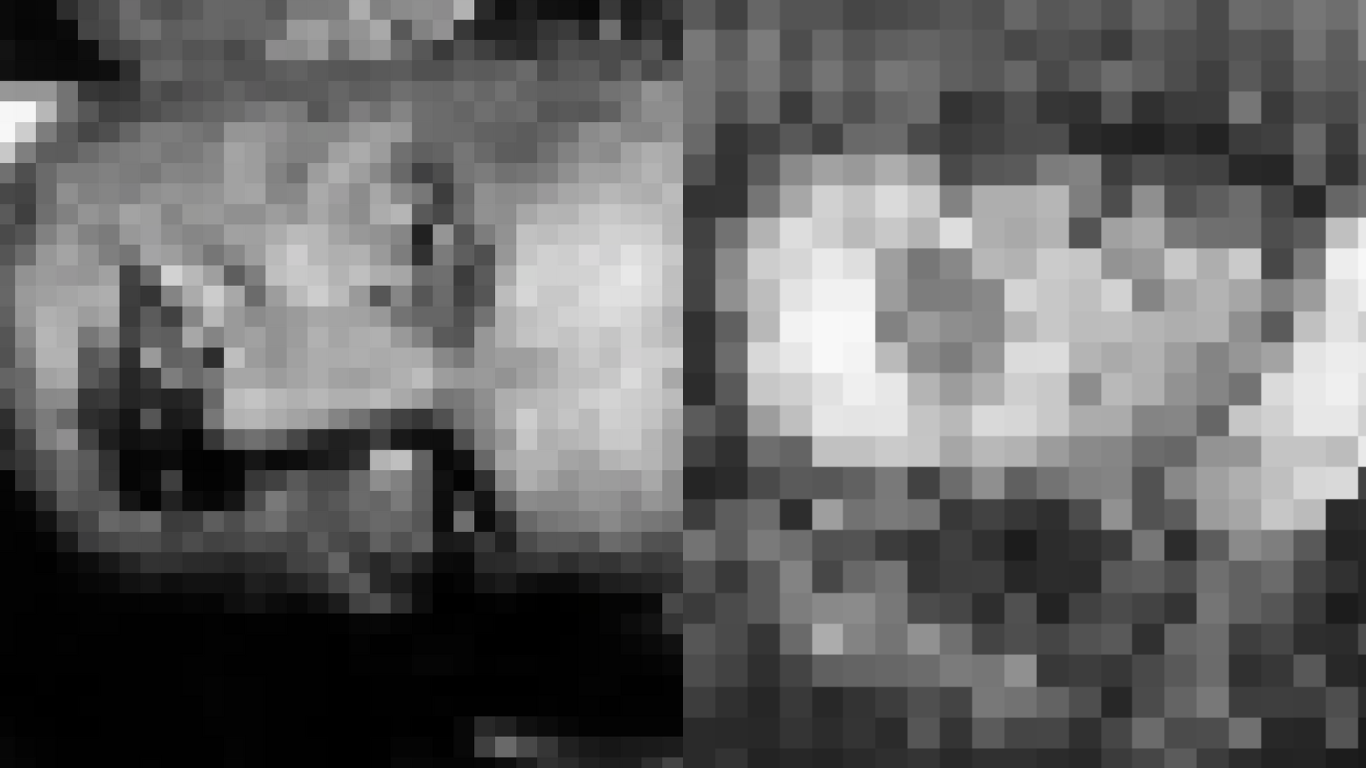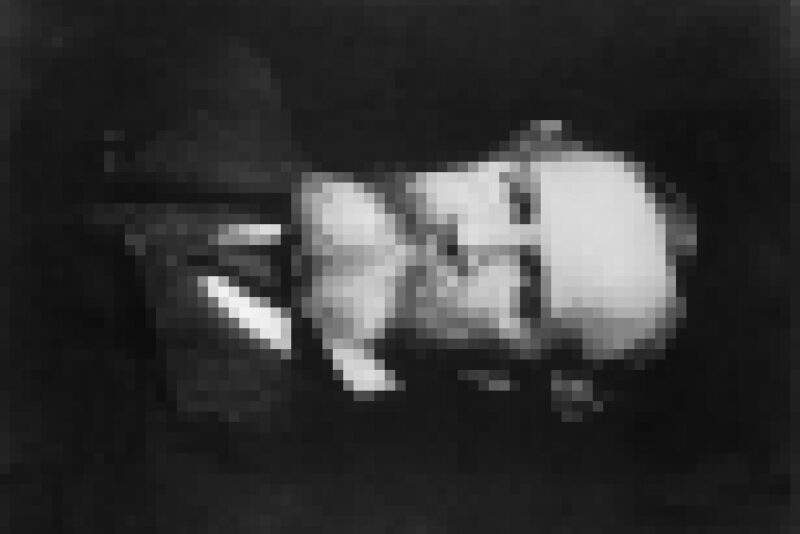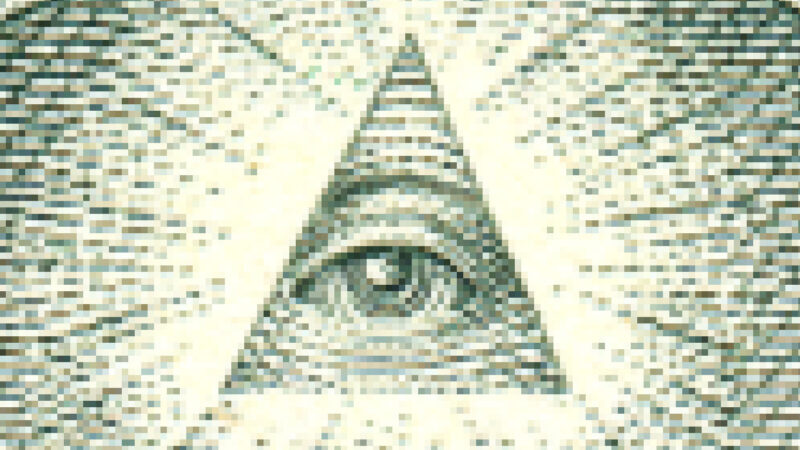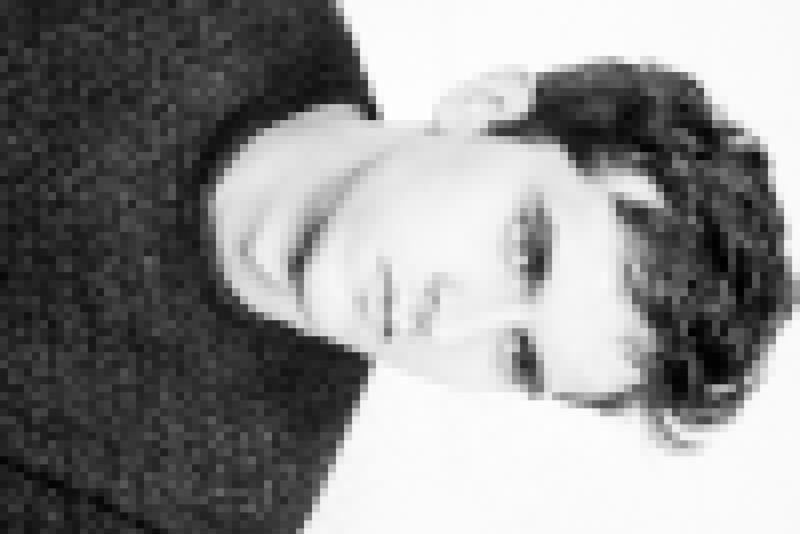Questions about human consciousness and the nature of its engagement with the world drive philosophical inquiry through the 20th century into the contemporary era. This is not only true for popular phenomenological and existential thinkers, but has received new attention due to developments in neuroscience and biology. Empirical scientific inquiry contributes deeper complexity to understanding what composes a person as both distinct individual and embedded in the world simultaneously. What defines the conscious experience of the human is complicated by how our immensely heterogenous species makes the world intelligible in a variety of ways. Through our conscious experience we make our world intelligible, and by making the world intelligible, we concomitantly make ourselves intelligible (as individuals and as a species).
This paradigm for processing reality through consciousness is not novel within the late-Modern (or even post-Modern) era. The goal of this analysis is to identify the genetics of this fascination with consciousness through the inter-reading of John Milton’s Paradise Lost and Martin Heidegger’s Being and Time. Milton’s nascent phenomenology comes prominently to the surface through his narrative of Adam and Eve’s first moments of consciousness. The creation of these two humans is emblematic of the late-Modern concern with the adult human’s active, conscious structuring of the world and likewise their place within it. Analysis of Paradise Lost will be centered specifically on close readings of Adam and Eve’s creation stories (VIII.252-295, IV.440-491, respectively). By connecting Heidegger to Milton, this analysis indicates additional paths in conceiving early-Modern thought as prefiguration of late-Modern existential concerns, and in Milton’s case, the phenomenology consequent to a Modern existential outlook.
There is a spirited history of academic study on Milton as a philosopher in his own right. Milton has been studied with an eye toward his engagement with the prominent philosophical questions. Additionally, his whole corpus of work is considered worthy of systematic explication in order to identify coherent or consistent trends which may articulate an underlying philosophy. This study will not attempt to identify any systematic “phenomenology” within Paradise Lost or any of its counterparts. Rather, it is interested in tracing the history of ideas by putting the Heidegger as a late-Modern thinker in dialogue with the poetic expression of similar ideas by Milton as an early-Modern thinker. The analysis assumes Milton’s reasonable consideration of enduring questions of consciousness in the early-Modern period, but in no way requires a systematic philosophical explication for substantive conceptual comparison.
Regarding the intersection of Heidegger’s thought and John Milton’s writing, this study is located in predominantly unexplored territory. Nevertheless, there is precedence for the application of Heidegger to other Renaissance and early Modern figures such as Shakespeare. This analysis, however, is in the company of other contemporary studies which expore how consciousness was philosophically considered in early Modern thought. The most systematic work done in recent years is by Timothy Harrison. Harrison thoroughly attempts to understand sentience as presented through literature by early Modern thinkers such as Montaigne, Shakespeare, Donne and Milton. He locates his work tangentially to what is termed “historical phenomenology.” That is, an attempt to explicate how someone in a distinct historical period may have experienced human existence. This is tied intricately to the hypothesis that a reciprocity exists between the conceptual systems embedded in human consciousness and the interpretation of experiential and affective data. That is, the organizing system effect the humans experience things. This assumed inter-dependence is closely related to Heidegger’s own thought.
In Paradise Lost, Milton offers an early-Modern precursor to 20th century phenomenology. These phenomenological precedents are located most significantly in Adam and Eve’s first-person recollection of their “creation,” and their initial attempts to understand being through an investigation of phenomena. Both in form and substance, Milton’s poetic exploration of the primogenitors conscientious explanation of the world, its arrangement, and their place within it prefigure Martin Heidegger’s 20th century phenomenology. By opening Adam and Eve’s creation with a sudden consciousness of the self and the world, Milton engages in a discourse of what it means “to be” which contours with Heidegger’s later philosophical concerns. The goal of this analysis is to show how Adam and Eve’s creation stories can be read alongside Heidegger’s Being and Time and identify Milton philosophically as a proto-Phenomenologist. Milton’s choice to depict Adam and Eve as primitive adults awakening from sleep into a consciousness is commensurate with the existential outlook of Heidegger’s phenomenology. As a result, Adam and Eve’s subsequent engagement with the world in order to understand the nature of their being (and all being) singles them out unmistakably of Heideggarian phenomenological practitioners.
Milton as proto-phenomenologist
Heidegger begins his seminal work Being and Time with an extended explication of phenomenology. Before diving into his own exploration of the being, the world, and the significance of temporality, he must first define the stakes and methodology of his work. Namely, Heidegger singles out the importance what he calls “the question of being,” or “the questioning of being.” This ontological outlook serves as the foundation for his philosophical program and the driving force behind phenomenology as a practice. Milton’s solidarity with this line of questioning is twofold: first, Milton expresses this same question as fundamental to the human condition through the poetic disclosure of Adam and Eve’s first experiences; secondly, as Adam and Eve first come to awareness of their world, the stakes of existence are outlined in the manner in which they encounter and understand their new world. Milton as philosopher frames Adam and Eve’s creation experience with a concern for how the human is faced with the enduring question of structuring and understanding the self, the world, and the nature of being as a whole.
It is important to distinguish between the notion of Milton as “phenomenologist” and Adam and Eve as “phenomenological practitioners” for clarity sake. The goal is simply to disambiguate what it means to be engaged in phenomenology. On one hand, “phenomenology” has come to be understood as a historical movement in philosophy with a certain emphasis on understanding being through the interpretation of phenomena. Those who have adopted this methodology might be classified as “phenomenologists” because of their philosophical presuppositions and premises. In this way, I identify Milton as a precursor to this historical movement in philosophy because of his shared concerns and depiction of a similar methodology in the creation stories of Adam and Eve. On the other hand, from the interior of the practice, Heidegger himself would emphasize that all people are “practicing” phenomenology. That is, from Heidegger’s viewpoint, we are all practitioners of phenomenology in that we are caught up in a world of phenomena (including the self) which we actively attempt to understand. In this way, Heidegger’s explication of the “practice of phenomenology” relates more particularly to what Adam and Eve do and how they encounter the world then it relates to Milton qua philosopher. Nevertheless, Milton’s depiction of Adam and Eve reflexively implicates his philosophical thought and how as author he evinces similar concerns to the phenomenological thinkers of the late-19th and 20th century.
First, Milton structures Adam and Eve’s creation as the awakening of the mature, adult human into the world. Adam relates his experience to Raphael: “As new wak’t from soundest sleep / Soft on the flowrie herb I found me laid” (VIII.253). Likewise, Eve retells her awakening to Adam: “That day I oft remember, when from sleep / I first awak’t and found my self repos’d” (IV.449-450). The importance of this first sequence cannot be understated as it is poetically and philosophically emblematic of the basic existential disposition of the person seen from a phenomenological viewpoint. As a result, it will resurface at various intervals throughout this analysis. For now, it is sufficient to interrogate the complexity of Milton’s framing of Adam and Eve’s coming to consciousness regarding two peculiar intertextual similarities. “Awaking from sleep” implies the awareness of the self as a historically persisting entity which is faced by a sense of boundlessness by its undisclosed history. Additionally, both Adam and Eve “find him- or her-self.” That is, both Adam and Eve retell their story by invoking their “self” as a phenomena to be encountered and one which discloses itself to them.
It is notable that Milton does not portray Adam and Eve’s creation experiences as a sudden coming of consciousness from “nothingness.” Despite the experience of sleep as a small death, it remains a state of existence and being for Adam and Eve. Milton does not explain their creation as a coming to being out of nothing, but rather, allows them to retell their experience of coming to being as the awakening from sleep. To awaken from sleep implies that one is now conscious of a previous state of being, although it may not be precisely conscious of what that state of being entailed. As a result, in simply the first moments of their recollection, Adam and Eve are both impressed by two distinct facets of their experience: each existed unconsciously, and now exists consciously. Notably, the sleep is still a state of existence. Milton’s construction of this experience parallels Heidegger’s paradoxical point of departure for phenomenology. On one hand, each person is faced with the temporal boundedness of its existence. Because Adam and Eve “awaken,” their concern for the world must be shaped by the impression that they have “come from somewhere”—although in this case it is the blackness of sleep. On the other hand, without any understanding of where they have come, they are faced by the boundless freedom of their own being.
Milton’s depiction of Adam and Eve’s awakening experiences have genetic conceptual links to reformation theologies and the essential questions embedded in the traditions of Protestantism. 15th and 16th century reformers sought to free the individual to a relationship with God free from inappropriately pre-determined religious traditions. This unshackling of the individual from pre-determined bounds to free engagement with being as universally accessible tracks through Milton into Heidegger. In his extended introduction to Being and Time he writes, “Tradition takes what has come down to us and delivers it over to self-evidence; it blocks our access to those primordial ‘sources’ from which the categories and concepts handed down to us have been in part quite genuinely drawn.” Nevertheless, Heidegger still returns often throughout Being and Time to critique disembodied Enlightenment conceptions of the self (namely, Cartesian and Kantian). Heidegger does not seek to abandon tradition and return to the ideal of an ahistorical self. Instead he says, “The discovery of tradition and the disclosure of what it ‘transmits’ and how this is transmitted, can be taken hold of [by Dasein] as a task in its own right.” Heidegger’s recognizes that a deeper understanding of the self must in part be limited by what he calls “historicality.” That is, “any Dasein is as it already was, and it is ‘what’ it already was.” Historicality is a fundamental condition of the character of person. The person must except that it is first bounded by the fluidity of time and experience. Heidegger goes on to articulate how this historicality drives the person’s attempt to understand the “Being it may possess.” Now that they are conscious, Adam and Eve will engage in precisely this investigation. Their thoughts and actions spurred by the sudden, inextricably unsatisfied bewilderment concerning the nature of their existence that accompanies, surprisingly or not, their sudden existence.
Adam and Eve’s awakening moments are disorienting. Adam opens his retelling of his creation by imploring Raphael, “For Man to tell how human life began / Is hard; for who himself beginning knew?” (VIII.250-251). For Adam to understand more about the nature of his existence, he “longs to converse” (VIII.252) with a being who exists outside the temporality to which his own consciousness is constrained (in this case, the angelic Raphael). The implication is that a being outside of Man’s own time would have access to more transcendental levels of being and therefore, better explanations for phenomena. Eve’s bewilderment is articulated even more strongly by awakening “much wondring where / And what I was, whence thither brought, and how” (IV.451-452). Eve’s desire to understand her own existence signifies Heidegger’s historicality. The language of her disorientation is rooted in what occurred previously to bring her into existence. She recognizes that in order for her to be now, something must have come before and/or acted upon her. “On the other hand,” Heidegger continues, “if Dasein has seized upon its latent possibility not only of making its own existence transparent to itself but also of inquiring into the meaning of existentiality itself (that is to say, of previously inquiring into the meaning of Being in general), and if by such inquiry its eyes have been opened to its own essential historicality, then one cannot fail to see that the inquiry into Being (the ontico-ontological necessity of which we have already indicated) is itself characterized by historicality.” Adam and Eve are depicted as people with the precise nuances of Heidegger’s Dasein. That is, each person is concerned by both his or her fundamental historicality (that is, boundedness within time) and at the same time understand itself as a participant in the universal being in general.
In this way Adam and Eve’s creation story are constructed in parallel to Heidegger’s conceptualization of Dasein. They are both aware of the search for an essential existential meaning for the unbounded self. Heidegger simply calls this unbounded existential impulse “inquiry into the meaning of Being in general.” However, from the very beginnings of conscious experience, Adam and Eve’s eyes are “opened to [his or her] own essential historicality.” By depicting Adam and Eve’s creation story in this way, Milton prefigures the concerns of the late-Modern phenomenologist in humanity’s search for an understanding of the essence of the individual’s existence. As archetypes of the everyday person, Adam and Eve are portrayed with dialogue that is more indicative of the mid-20th century classical existentialist than the biblical characters in Genesis. Adam and Eve are not persons bound only by what is impressed on them by the present, but by the boundedness of their embodied self to the world and its ongoing existence. As a result, Adam and Eve continue their stories by relating their encounter as phenomenological practitioners. The way in which they seek to understand the world prefigures Heidegger’s explication of the practice and orientation of phenomenology.
Adam and Eve as phenomenological practitioners
Continuing his introduction to Being and Time, Heidegger writes, “[…] [T]he term ‘phenomenology’ expresses a maxim which can be formulated as ‘To the things themselves!’ It is opposed to all free-floating constructions and accidental findings; it is opposed to taking over any conceptions which only seem to have been demonstrated; it is opposed to those pseudo-questions which parade themselves as ‘problems’, often for generations at a time.” By composing an illustrative epic poem about the first humans Milton sets the stage for a thought-experiment about human consciousness. In this way, the thought-experiment unfolds in the subsequent creation narratives retold by Adam and Eve. Following the quote from Heidegger above, Milton’s thought-experiment begins with conscious awakening of adult humans who are unencumbered by the weight of “free-floating constructions” which would be—for the rest of us—embedded in either experience of time, or tradition across generations. As a result, Adam and Eve as primitive humans are the ideal phenomenological practitioners, as they have nothing else to go on but “the things themselves.” Milton, however, does not make this simple for the first humans—even though they are unencumbered consciousnesses there is still the problem of the difference between actuality and appearance. Heidegger comments both on the idealization of “seeing through the eyes of the primitive human” and the problem of distinguishing between appearance and actuality. Regarding both of these problems, the contours come into greater focus between Heidegger and Milton’s distinct projects.
A predominant force in Protestant thought following the reformations is the reemphasis of the unmediated relationship between the believer and God. For apparent reasons the experience of Adam and Eve in the garden would increasingly become a potential site for how a pure, unadulterated relationship with God could be conceptualized. We share our basic humanity before God with Adam and Eve. Thusly, Adam and Eve’s experience, with each other and before God could be read as applicable to the post-reformation Christian. Without the required mediation of the religious institution there is a human solidarity between the primogenitors and the modern, unobstructed spiritual priesthood of Christians. In the same vein, Heidegger writes about how we may benefit from seeking the perspective of a primitive person:
To orient the analysis of Dasein toward the ‘life of primitive peoples’ can have a positive significance [Bedeutung] as a method because ‘primitive phenomena’ are often less concealed and less complicated by extensive self-interpretation […] Primitive Dasein often speaks to us more directly in terms of a primordial absorption in ‘phenomena’ […] A way of conceiving things which seems, perhaps, rather clumsy and crude from our standpoint, can be positively helpful in bring out the ontological structures of phenomena in a genuine way.
Early-Modern writers concerned with the experience of Adam and Even in the garden (such as Milton and Lucy Hutchinson) demonstrate this sentiment—particularly from a protestant Christian perspective. Through their reconsideration of the rebellion of Adam and Eve in paradise, they indicate that a “primitive human’s” relationship with God can be read as directly applicable to the new, post-reformation Christian. Adam and Eve’s creation in Paradise Lost is a type of exploration in what Heidegger calls “primitive Dasein.” In this case, it would be primitive Christian Dasein. This is not to say that Heidegger and Milton implored people to return to the lifestyle of primitive man. Surely they did not. Rather, the opportunities presented by an analysis of the primitive person serves to free us from anything concealing our access to phenomena in themselves, and ultimate our understanding of being at the most foundational level.
There is, however, a problem for our primitive phenomenological practitioners—”things” are not always what they “seem.” Heidegger emphasizes that “phenomenon” signifies “that which shows itself in itself.” That is, something can only be considered a phenomena, and can only be interpreted by the person as having accurate information about the nature of being, by disclosing itself truly. There can be a difference between what some-thing is and what it appears to be. This is an important premise for Heidegger’s articulation of phenomenology as a practice. It is in this way “phenomenology” is understood as the attempt to uncover and discover things as they really are. Adam and Eve, as freshly conscious humans, have a unique capacity to engage in precisely this practice—pitfalls and all.
Milton’s enigmatic descriptions of what things “seem to be” echo through Paradise Lost. Notably, Heidegger draws on precisely this language to also comment on the elusiveness of phenomena: “[…] it is even possible for an entity to show itself as something which in itself it is not. When it shows itself in this way, it ‘looks like something or other.’ This kind of showing-itself is what we call ‘seeming.’ In Eve’s creation account, this occurs almost immediately: “I thither went / With unexperienc’t thought, and laid me down / On the green bank, to look into the cleer / Smooth Lake, that to me seemd another Skie” (IV.456-459). Milton’s use of seem here and throughout the rest of Paradise Lost prefigures the basic mechanism of phenomenology—differentiating between what things seem to be and what they really are.
By attempting to understand the underlying reality behind the world that has been presented to them, Adam and Eve are—to put it crudely—doing Heideggarian phenomenology. Both have an orientation toward interpreting the phenomena as they appear, and for what they are without preconception. In the lines above, Eve makes sure to note that she goes “with unexperienc’t thought.” She has this, quite evidently, because her freshly awaken conscious is continually encountering new phenomena which she has not experienced, and assimilated before. Except, of course, for the lake which she perceived at as “another Skie” until she investigated it closer. She attempted to group the phenomenon of the lake, with the phenomenon of the sky because it presented itself to her visually as the same. Upon further inspection, through proximity, feeling, new visual data, the phenomena more fully revealed itself to her. It was not the same phenomena as the sky, but a different one.
As Adam recounts his story to Raphael, it becomes clear that Adam came to a knowledge of God simply through his experience of phenomena: “And ye that live and move, fair Creatures, tell, / Tell, if ye saw, how came I thus, how here? / Not of my self; by some great Maker then” (VIII.276-278). Adam implores the animals to disclose who brought him here. Up until these lines in his creation story Adam has no interaction with a transcendent being. Milton frames Adam’s creation story by depicting a primitive, freshly conscious man discerning the existence of a creator and his obligation to that creator. He comes to this conclusion purely as a deduction from the phenomena presented to him. In this way, Milton’s Adam, is practicing Heidegger’s phenomenology to the full extent of its ontological implications:
Being, as the basic theme of philosophy, is no class or genus of entities; yet it pertains to every entity. Its ‘universality’ is to be sought higher up. Being and the structure of Being lie beyond every entity and every possible character which an entity may possess. Being is the transcendens pure and simple. […] Every disclosure of Being as the transcendens is transcendental knowledge. Phenomenological truth (the disclosedness of Being) is veritas transcendentalis.
The transcendental nature of being is disclosed to Adam through the phenomena presented to him. Although Heidegger may not have agreed with the particular conclusions, Adam is engaging in phenomenological methodology. His capacity to do so is catalyzed by his position as primitive man. While his particular conclusion that he must have been created is surely presupposed by Milton’s own ideas about the nature of the transcendent, Adam’s orientation toward the “universality of being” is indicative of his phenomenology.
Concluding Remarks
Milton has long been appreciated as a writer among philosophers. The conceptual genetics which tie Milton’s Paradise Lost to Heidegger’s phenomenology indicate an important concern for the nature of consciousness from the early- to the late-Modern period. Heidegger’s phenomenology is closely linked to Milton’s depiction of how freshly conscious, primitive humans would have attempted to understand the world. As a result, it is not nearly as easy to delimit the existential concerns and outlook of 20th century to post-world war philosophers. Through the creation story of Adam and Eve, Milton performs a thought experiment which prefigures the existential solitude of the late-Modern person trying to order meaning for himself. It does not weaken this assertion that Milton has clearly defined theological conclusions for Adam and Eve’s phenomenology. Instead, it serves to potentially link this existential outlook as far back as the reformation theologies which placed man in direct, unmediated relationship with God. In this way, what Luther sought to do by placing humankind directly before the throne of God, is illustrated in the unobstructed experience of Milton’s Adam and Eve. Always before the invisible God—universal being both ever-present, and ever-undisclosed—both Milton and Heidegger ask the same question we ask everyday—what are Adam and Eve to do when they awake?




